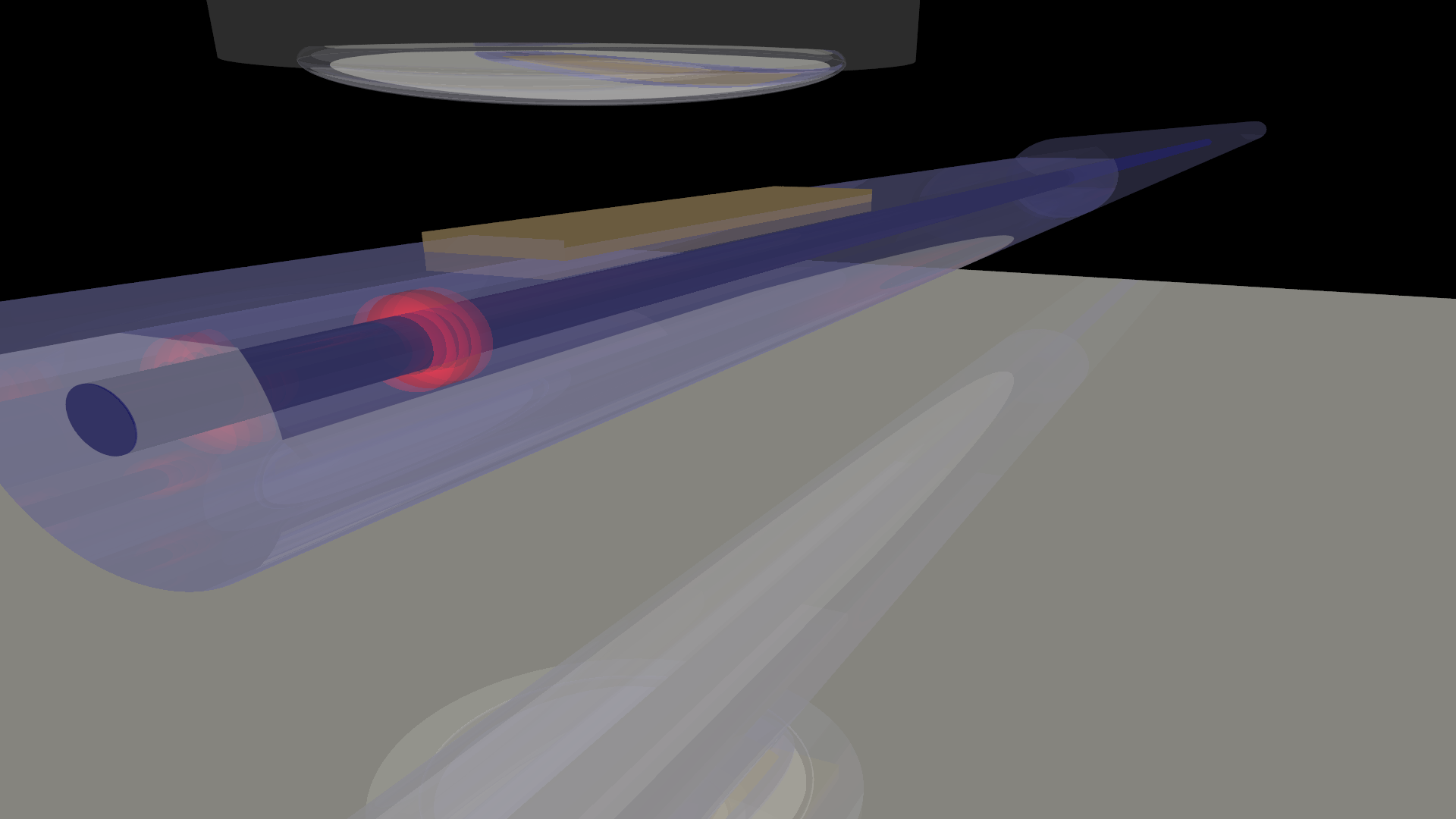Eyal Feigenbaum (17-FS-035)
Executive Summary
We are assessing the feasibility of controlling the guided wave in novel optical fibers with a "D" shape that are coated with a thin metal layer to create plasmonic light waves. This study may enhance performance and capabilities of high-power lasers and pave the way for fiber-based spectral filters and advances in laser pulse reshaping.
Project Description
Two decades of research have repeatedly demonstrated that the strong light–matter interactions in metal-optic devices mediated by plasmonic propagating light waves open new scientific and technological avenues. Plasmonics is the study of the interaction between the electromagnetic field and free electrons in a metal. Plasmonic light waves are electromagnetic waves propagating on metal surfaces coupled with surface electron oscillations. These plasmonic waves with strong surface localization are enabled by metal negative permittivity. Merging plasmonics and optical fibers has been previously explored mainly for sensing applications, associated with surface-wave-enhanced sensitivity to molecules. We are taking a different approach by assessing the feasibility of using optical properties to control the guided wave in the optical fiber. Extending the concept of designing optical properties with plasmonics effects on optical fibers could open new avenues in the field of high-power lasers by enabling extensive control at the laser front end. We plan to examine the feasibility of a method for designing optical fiber properties by patterning plasmonic structures on optical fibers flattened into a D shape (in which the inner cladding around the fiber core is D-shaped with a flat surface). Using the strong light–matter interaction of plasmonics, we will develop the foundations of this hybrid technology as well as several key components. The design and fabrication will be guided by developing photonic numerical simulations tools.
We intend to conduct a feasibility study, in collaboration with Norfolk State University in Virginia, of plasmonic fiber devices for laser pulse control in front-end systems. We expect to develop a methodology for designing and fabricating linear plasmonic-fiber devices and evaluate their energetics limits. We will fabricate metal-deposited D-shaped optical fiber segments, where the core-guided mode is coupled to a metal-supported plasmonic mode, and is fabricated on the fiber’s flat surface. In a D-shaped fiber, the core-to-fiber surface distance is reduced in a specific region, enabling the enhanced coupling to the plasmonic device. A simple plasmonic device for this configuration is a thin metal layer, which supports a plasmonic local mode. Modifying the structural properties of the metal layer and the core spacing, coupling between the plasmonic mode and the fiber modes can be precisely tuned. We will then optically characterize the fiber segments using spectral transmission measurements. Semi-analytical design methods and numerical simulations will be used to guide the experiments. We expect that determining the feasibility of using plasmonic fiber devices for laser pulse control can help in establishing the foundations for design of fiber-based spectral filters, and advance the performance of the high-power laser system front-end by expanding its available solution toolbox. In addition, the proposed technology paves the way for future advances in pulse reshaping.
Mission Relevance
This research contributes to improving the technology of short-pulse lasers by enhancing pulse-control of the front-end of such laser systems, in support of the Laboratory’s core competency in lasers and optical science and technology, as well as the DOE goal to strengthen key science, technology, and engineering capabilities. This technique addresses the increasing interest in applications of ultrashort-pulse lasers and the need for novel fiber laser architectures and methods to expand fiber lasers’ operating envelope. Our work also addresses the issue of tailored synthesis with a new paradigm for artificially designed unique properties for optical fibers, in support of the core competency in advanced materials and manufacturing.
FY17 Accomplishments and Results
In FY17 we (1) initiated the contract process for our collaboration with Norfolk State University in Virginia, (2) began establishing our semi-analytics tools, and (3) assembled and characterized D-shaped optical fibers for use by Norfolk State University (see figure).
   






